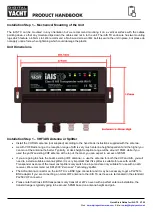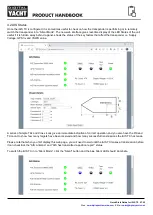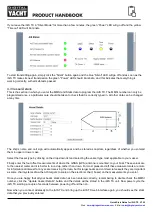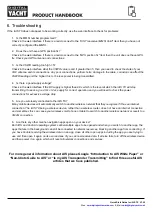
Quick Start Guide for iAIS TX V1.00
E-Mail:
Installation Step 2
– GPS Antenna
•
The supplied GPS antenna is designed to be fitted to a
standard 1”x14 TPI threaded VHF pole mount, which are
available in many different styles from all good marine
electronic dealers and chandleries.
•
You should ensure the GPS antenna has a good clear view of
the entire sky. It is not recommended that the GPS antenna is
mounted up a mast where the motion of the vessel will cause
the antenna to swing and potentially reduce the accuracy of
the GPS position.
•
Do not mount your antenna in the direct path of a radar
transmitter.
•
Feed the ten metre cable attached to the GPS antenna,
through the pole and screw the antenna onto the pole mount
as shown.
•
Route the cable to your iAIS TX unit, adding any necessary
extension cables.
•
The GPS antenna cable is terminated in a thin FME
connector, that is easy to route through the trunking and holes
on a boat. It is supplied with an FME to TNC adaptor and it is
important that once you have routed the cable through to the
iAIS TX that this adaptor is firmly screwed in to the FME
connector.
•
Finally screw the adaptor on to the GPS connector on the iAIS
TX. The GPS connector is the threaded TNC type connector
to differentiate it from the AIS/VHF antenna which is
terminated in a bayonet BNC type connector.
Installation Step 3 - Power
•
Provide power connections to the unit. Power is connected to the integral 2 core Power cable on the Red and
Black wires. The Red wire is the positive (+) connection. The Black wire is the negative (-) connection.
•
Connect the stripped wires to the nearest source of primary DC power. Ensure that the supply is connected via an
inline 3A fuse (not supplied) or suitable circuit breaker. Add the fuse in the positive power connection to the unit if
necessary.
•
The iAIS TX Class B+ Transponder is designed for a 12V or 24v DC systems.
Installation Step 5
– Power Up
•
Apply power to the iAIS TX and verify that some of the LEDs flash or illuminate.
GPS
Antenna
FME connector
and adaptor apart
FME connector
firmly screwed in












